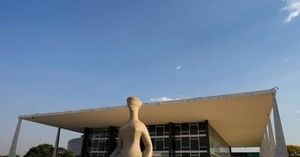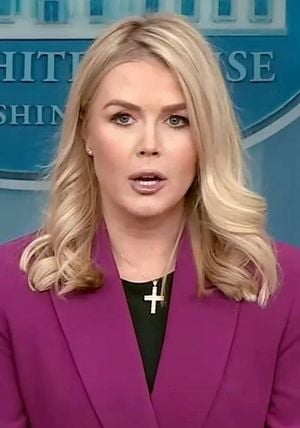As the world edges toward another perilous moment in nuclear history, recent weeks have seen a flurry of diplomatic activity and soul-searching in cities forever marked by the atomic age. From the corridors of power in Geneva and Washington to the memorial halls of Hiroshima and Tokyo, scientists, diplomats, and peace advocates are grappling with the chilling reality that the guardrails of nuclear stability are eroding faster than new ones can be built.
The immediate backdrop is the ongoing crisis in Ukraine, where the stakes are high not only for the embattled nation itself but for the entire international order. According to Sky News, a pivotal meeting is set for November 24, 2025, in Geneva, bringing together U.S. envoy Steve Witkoff and Ukrainian officials, with senior European representatives joining what was initially expected to be a more limited dialogue. The urgency is palpable: European leaders are preparing for further talks in Washington just a day later, hoping to keep U.S. President Trump engaged in the search for a peace agreement before Thanksgiving, despite skepticism about meeting such a tight deadline.
The American push for rapid progress—described by one source as a "sudden injection"—bears the fingerprints of Vice President JD Vance, whose ideas from the summer of 2024 have shaped the current 28-point peace plan under discussion. Vance, noted for his calls to refocus American attention on domestic matters, appears keen to resolve the Ukraine crisis swiftly, allowing the administration to shift gears at home. The plan’s territorial elements closely mirror proposals he championed before Trump’s election victory, raising questions about whether this is a genuine push for peace or a strategic bid to clear the foreign policy slate.
Yet, as Sky News correspondent Mark Stone reports, the mood among Ukraine and its allies is one of profound déjà vu. Just months ago, European leaders rushed to Washington after Trump’s apparent alignment with Putin at the Alaska Summit, only to believe they had successfully steered him back toward a united front on Ukraine. Now, similar efforts are underway, with British national security adviser Jonathan Powell emerging as a key figure in transatlantic discussions—though not privy to every twist in the American playbook.
With the Geneva meeting described as "absolutely pivotal," the days ahead are expected to unfold on a "day-by-day" basis. Should momentum continue, a so-called "coalition of the willing" among European nations will convene, followed by a likely delegation to Washington. The looming Thanksgiving holiday in the United States adds a sense of urgency, with Trump’s suggested deadline for a peace deal considered improbable but not impossible. Even if only a memorandum of understanding is signed, it could serve to maintain momentum and keep the U.S. president invested in the process. As one observer put it, "this moment, for Ukraine and for Europe, is perilous and ominous."
But the nuclear threat is not confined to the immediate crisis in Eastern Europe. Earlier this month, the 63rd Pugwash Conference on Science and World Affairs convened in Hiroshima from November 1 to 5, 2025, drawing scientists, diplomats, and civil society leaders to a city where the consequences of nuclear war are etched into every stone. According to IDN-InDepthNews, the conference unfolded against a backdrop of mounting geopolitical tension, the breakdown of arms control treaties, and the return of explicit nuclear threats to international discourse.
The timing was especially poignant, coinciding with the final days of the “Portraits of Atomic Bomb Survivors—80 Years of Memory” exhibition at the International Conference Center Hiroshima. Produced by 80,000 Voices, the exhibition offered delegates a visceral reminder of the human cost of nuclear policy failures—a "visual bridge between memory and the urgent discussions unfolding in nearby conference rooms."
Delegates at Pugwash were noticeably more somber than in previous years. The Working Group on Nuclear Disarmament and the Future of Arms Control identified a litany of risks: the collapse of key arms control agreements, the modernization of nuclear arsenals, the integration of artificial intelligence and hypersonic technologies, and the increasing vulnerability of launch-on-warning postures to cyberattack. One senior arms control official, speaking in a closed session, warned, "The guardrails of the nuclear age are eroding, and we are unprepared for what comes next."
The Bulletin of the Atomic Scientists’ Doomsday Clock, set at 89 seconds to midnight, loomed large in discussions—not merely as symbolism, but as a concrete measure of structural danger. In response, the Pugwash Working Group recommended urgent confidence-building measures: the adoption of No First Use policies by the U.S. and Russia, a shift from launch-on-warning to launch-on-attack postures, system-based arms control frameworks, and the inclusion of missile defense in strategic negotiations. The group also called for strengthened controls on highly enriched uranium and renewed technical dialogue among the world’s major nuclear powers.
During the conference, the Pugwash Council issued the Hiroshima Declaration 2025, a stark warning that the global nuclear order is approaching a "decisive moment." The declaration highlighted the erosion of international nuclear norms, rising proliferation risks, the accelerating modernization of nuclear forces, and the weakening of diplomatic channels—especially between the U.S. and Russia. It called for renewed engagement between nuclear-armed states, strengthening the Nuclear Non-Proliferation Treaty (NPT), greater support for the Treaty on the Prohibition of Nuclear Weapons (TPNW), entry into force of the Comprehensive Test Ban Treaty (CTBT), and a commitment to prevent the weaponization of outer space. Most crucially, it reaffirmed the moral principle rooted in Hiroshima and Nagasaki: "nuclear weapons must never be used again, under any circumstances."
While scientists and diplomats debated policy in Hiroshima, a different kind of gathering took place in Tokyo on November 15, 2025. Hundreds of Soka Gakkai members from around the world assembled for a memorial service marking two years since the passing of Daisaku Ikeda, the Buddhist thinker and peace advocate whose decades-long campaign for nuclear abolition inspired a global movement. As IDN-InDepthNews recounts, Soka Gakkai President Minoru Harada urged participants to treat 2029, the sixth anniversary of Ikeda’s passing, as a milestone for advancing peace efforts rooted in dignity and nonviolence, stating, "His legacy is carried not by institutions, but by people."
Ikeda’s vision drew heavily on the teachings of his mentor, Josei Toda, who in 1957 declared before 50,000 young people, "I denounce nuclear weapons as the embodiment of absolute evil." Toda’s emphasis on "human revolution"—the transformation of individuals as the basis for social change—continues to shape Soka Gakkai International’s peace activities worldwide.
The convergence of scientific and spiritual communities this November underscored a vital lesson: while political structures and treaties are essential, they are not enough. Public imagination, moral conviction, and civic movements must also play a role in preventing nuclear catastrophe. As one young scholar who attended both the Hiroshima conference and the Tokyo memorial observed, "Hiroshima tells us what we must never repeat. Tokyo reminded me why we have to try."
As delegates departed Hiroshima, many visited the Peace Memorial Museum and the Atomic Bomb Dome, passing artifacts that bear silent witness to the horror of nuclear war—a charred lunchbox, a melted tricycle, uniforms burned into shreds. The message was clear: deterrence is not the same as security, and memory must inform policy. The pursuit of peace, as the events of November 2025 make plain, is inseparable from the pursuit of truth and the willingness to confront the unresolved moral questions of the nuclear age.




